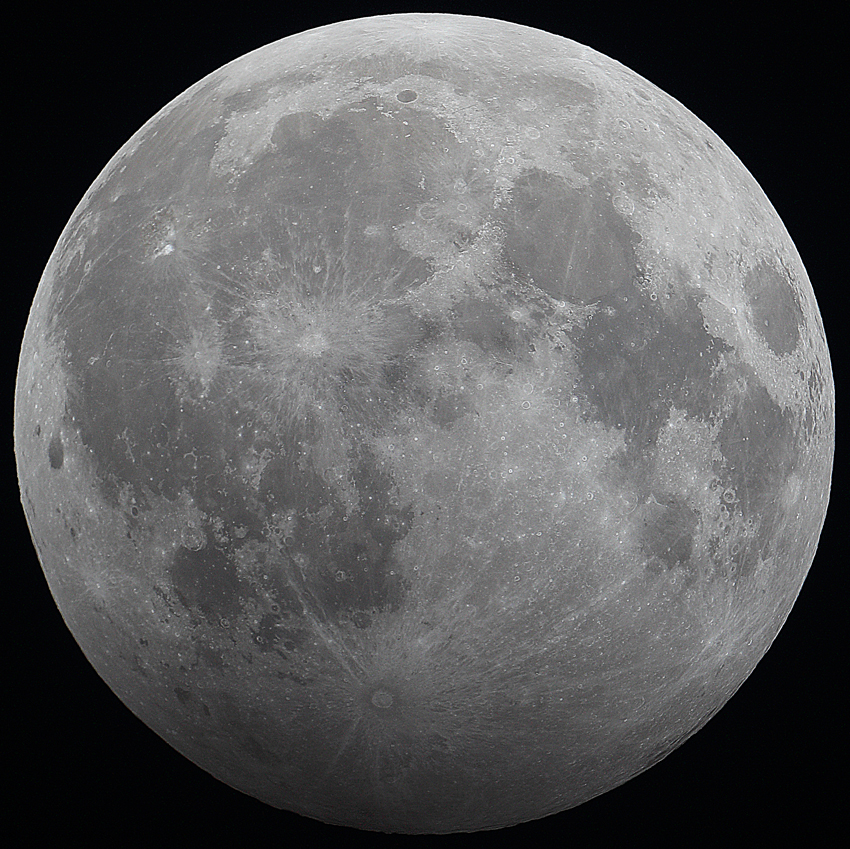
Ever since man's first appearance on this planet, eclipses have been regarded as both mystical and devine with some cultures, for example,
associating a lunar eclipse with the imminent arrival of death, war and/or famine. Although the distance of the moon and sun from earth vary
dramatically (400,000 vs 150,000,000 km, respectively), the apparent size of these two heavenly bodies is such that they give the impression
during an eclipse, solar or lunar, to be virtually identical (ie. about 30 arc-minutes in angular size). A total eclipse represents the unique
occurrence in space and time where the sun, moon and earth are perfectly aligned as three collinear points on the same orbital plane. When the
collinearity is not perfect but one of these three bodies is slightly higher or lower in the plane, we have a partial eclipse. Of course, a
solar eclipse occurs when the moon lies perfectly between the sun and the earth, thus eclipsing the solar disk. In contrast, a lunar eclipse
occurs when the earth lies between the sun and moon and, thus, the moon is hidden by the earth's shadow.
Note: Although total lunar eclipses are stunning
events, partial eclipses involving the earth's penumbra are often considered non-events and not worthy of observation since the minute changes
in the apparent magnitude of the moon are barely visible to the ground-based observer (if at all). However, this particular penumbral eclipse
was sufficiently deep to not only allow for an event visible to the naked eye but permitted for the reconstruction of the penumbral shadow and
similar to an earlier partial eclipse where the umbral shadow was captured.
The composite image below is a digital time series sequence centered on the penumbral eclipse at maximum. Furthermore, the length of each exposure
was purposely kept constant from image to image so as to ensure the change in magnitude during the course of the eclipse, however slight, would
be captured as accurately as possible in the accompanying time series. Finally, all images were recorded in RAW image format so that the digital
camera's on-board software would not manipulate the white balance in any way and, thereby, distort the planned comparison.
Note: For three time series illustrating the progress of the penumbral shadow, please click
here, here
and here.
(First contact) |
(First contact) |
(Start of Totality) |
Penumbra |
(End of Totality) |
(Full) |
(End) |
|
|
Body: Moon Mass: 0.0123 x Earth Mean Eq Diameter: 0.2719 x Earth Distance: 371,571 km Sidereal Rev: 27d 07h 43m 11s Age: 14d 17h 59m Diameter: 32.55' Saros Cycle: 144 Magnitude:
Duration:
|
 |
Date: Jan 10, 2020 21:10:00 UT+2 Location: Athens, Greece Equipment: AP 160/f7.5 StarFire EDF AP 1200GTO/CP3 GEM Canon EOS 700D Baader UV/IR-Cut Filter Exposure: 1 x 1/320 sec ISO 100 RAW Image Format 5184x3456 image size Manual Mode Servo Mode Software: Digital Photo Pro V4.6.30.0 Photoshop CS5 Processing: RAW to TIFF (16-bit) Conv Resampling JPG Compression |